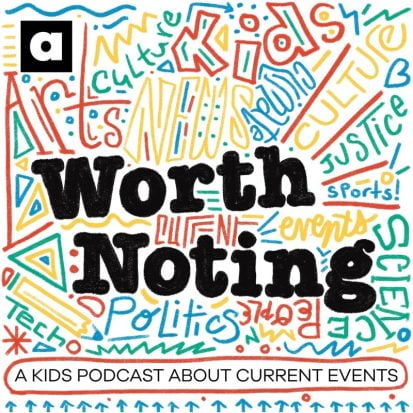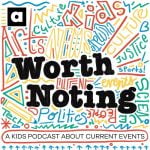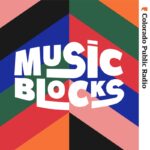
Filling in What is Missing with Elizabeth Partridge and Lauren Tamaki
Leave a reviewElizabeth Partridge and Lauren Tamaki share Seen and Unseen, an important work of nonfiction featuring powerful images of the Japanese American incarceration captured by three photographers–Dorothea Lange, Toyo Miyatake, and Ansel Adams–along with firsthand accounts of this grave moment in history.
© A Kids Company About | 31:06
|Season: 5 |Episode: 16 |
Full episode description
 Episode One: Nic Stone
Episode One: Nic Stone
This is an Episodic show. You can listen to it in any order, but episode one is always a great place to start.Full Episode description
Elizabeth Partridge and Lauren Tamaki share Seen and Unseen, an important work of nonfiction featuring powerful images of the Japanese American incarceration captured by three photographers–Dorothea Lange, Toyo Miyatake, and Ansel Adams–along with firsthand accounts of this grave moment in history.
BOOK DESCRIPTION: Seen and Unseen: What Dorothea Lange, Toyo Miyatake, and Ansel Adams’s Photographs Reveal about the Japanese American Incarceration by Elizabeth Partridge and Lauren Tamaki
Page Length: 132 pages
Ages 10 to 14, Grades 5 to 9
This important work of nonfiction features powerful images of the Japanese American incarceration captured by three photographers–Dorothea Lange, Toyo Miyatake, and Ansel Adams–along with firsthand accounts of this grave moment in history.
Three months after Japan attacked Pearl Harbor in 1941, US President Franklin D. Roosevelt ordered the incarceration of all Japanese and Japanese Americans living on the West Coast of the United States. Families, teachers, farm workers–all were ordered to leave behind their homes, their businesses, and everything they owned. Japanese and Japanese Americans were forced to live under hostile conditions in incarceration camps, their futures uncertain.
Three photographers set out to document life at Manzanar, an incarceration camp in the California desert:
Dorothea Lange was a photographer from San Francisco best known for her haunting Depression-era images. Dorothea was hired by the US government to record the conditions of the camps. Deeply critical of the policy, she wanted her photos to shed light on the harsh reality of incarceration.
Toyo Miyatake was a Japanese-born, Los Angeles-based photographer who lent his artistic eye to portraying dancers, athletes, and events in the Japanese community. Imprisoned at Manzanar, he devised a way to smuggle in photographic equipment, determined to show what was really going on inside the barbed-wire confines of the camp.
Ansel Adams was an acclaimed landscape photographer and environmentalist. Hired by the director of Manzanar, Ansel hoped his carefully curated pictures would demonstrate to the rest of the United States the resilience of those in the camps.
In Seen and Unseen, Elizabeth Partridge and Lauren Tamaki weave together these photographers’ images, firsthand accounts, and stunning original art to examine the history, heartbreak, and injustice of the Japanese American incarceration.
NOTABLE QUOTES:
(7:50) “There was a kid in my class named Paul Yanamora who said in front of the whole class that his family had not been allowed to buy a house in our neighborhood after the war because they were Japanese American. And I was absolutely shocked. That’s when it totally hit me that something really bad had happened in our country that I did not understand.”
(8:44) I didn’t know my grandparents’ involvement until working on this book, how their families were involved. And it, it was just something that… “Oh, we left. We got over it. We left it behind. Look how successful we are. We don’t have to talk about it.”
(12:30) “The two of us got to work together in a collaboration that’s almost never allowed in doing a book together, which is usually the writer writes their bit and then they pull out and then the illustrator gets to work. But there was too many overlaps. I mean, I had the photos and then Lauren had these ideas and then she was like, “Well, if you could do this photo, I could do this illustration.” I’m like, “Huh! That’s a fantastic idea. Let’s swap photos.” So we just really shifted things around and it ended up letting both of us go so much deeper than we would’ve individually.”
(19:55) “Because you can talk in these grand kind of monolithic ways about an experience and about a people, but when you personalize it, that’s when you can touch people.”
(25:33) “There was so much of myself in this book.”
(25:42) “It’s never too late to discover parts of yourself, like, these big parts of yourself.”
(26:47) “Today, everybody has a cell phone and there’s a camera in the cell phone. So we have a very powerful tool for social justice in our back pocket. And I just wanna encourage people when you see something that just doesn’t feel right, you can bear witness to that by taking a photograph.”
(27:45) “You can’t let fear make the decisions for you.”
ADDITIONAL LINKS:
Elizabeth Partridge website – elizabethpartridge.com.
Lauren Tamaki website – laurentamaki.com
Purchase the Book – Seen and Unseen: What Dorothea Lange, Toyo Miyatake, and Ansel Adams’s Photographs Reveal about the Japanese American Incarceration
TALK ABOUT THE EPISODE:
What is an event that took place in history that you learned about recently? What was it like for you to learn this information? If able to make the connection, how do these historic events connect with our world today?
Look up photos by one of the three photographers mentioned in this podcast episode: Dorothea Lange, Toyo Miyatake, or Ansel Adams. How would you describe the moment captured in the photograph? What does it make you feel? What do you think the photographer was communicating through this photograph?
Talk with a grownup about the Japanese American incarceration. What (if anything) do they remember about this event? When did they learn about the incarceration? If able to recall, what did they feel when they first learned about the incarceration? And how do they feel about the incarceration now? Share your own reflections with the grownup.
CREDITS:
This podcast episode of The Children’s Book Podcast was written, edited, and produced by Matthew Winner. For a full transcript of this episode, visit matthewcwinner.com.
Write to me or send me a message at matthewmakespods@gmail.com.
Our podcast logo was created by Duke Stebbins (https://stebs.design/).
Our music is by Podington Bear.
Podcast hosting by Libsyn.
You can support the show and buy me a coffee at www.matthewcwinner.com.
We are a proud member of Kids Listen, the best place to discover the best in kids podcasts. Learn more at kidslisten.org.
Fellow teachers and librarians, want a way to explore building a stronger culture of reading in our communities? In The Reading Culture podcast, Beanstack co-founder Jordan Bookey hosts conversations that dive into beloved authors’ personal journeys and insights into motivating young people to read. And I am a big fan! Check out the Reading Culture Podcast with Jordan Bookey, from Beanstack. Available wherever podcasts are found.
DISCLAIMER: Bookshop.org affiliate links provided for any book titles mentioned in the episode. Bookshop.org support independent bookstores and also shares a small percentage of any sales made through this podcast back to me, which helps to fund production of this show.
© A Kids Company Aboutbop| Status: Active, 392 episodes | Kind: Episodic | Episode URL
The content, Artwork and advertising within this podcast is not owned or affiliated with Sound Carrot and remain the property of their respective owners.







